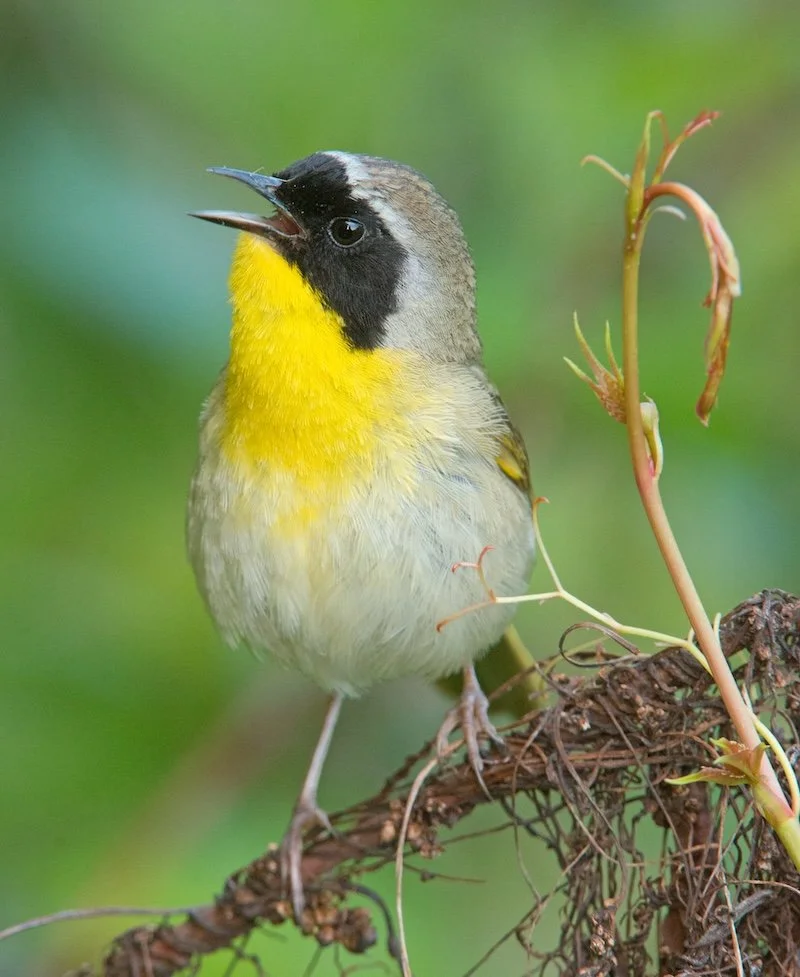Photo: Common Yellowthroats, Gary Robinette
Tom Blackburn
We’re in the middle of fall migration season. For birdwatchers, fall migration can be challenging because the warblers are drabber, but, of course, it’s even more challenging for the birds! A recent study published in Global Change Biology by scientists with the National Audubon Society identifies fall migration as the most dangerous time for warblers.
Common Yellowthroat, Randy Streufert
Southbound migration in the fall is perilous for warblers and other songbirds for multiple reasons. There are many juvenile bids that are inexperienced in migration. And the birds take longer routes back to their wintering grounds compared to the quicker and more efficient northward journeys. The longer southbound journeys expose them to more of the hazards that can weaken or kill them, such as light pollution and developed landscapes. National Audubon reports that some of the declining species closely associated with harm from light pollution and landscapes include the Common Yellowthroat, Connecticut Warbler and Prairie Warbler, all of which migrate through northern Virginia.
That report reminds us of important measures all of us can take to help the warblers and other birds passing through northern Virginia during the fall. Because most of them fly at night, they can be disoriented by bright lights from tall buildings and sky glow from light pollution. Some crash into the buildings and are injured or die. Other birds fly around the lights, exhausting themselves.
So, for the more than 160 million birds migrating through our area this fall, take a few simple steps to reduce some of those light hazards. If you live in a detached home or townhome
Turn off interior lighting at night, especially on upper floors
Close curtains or blinds
Down-shield exterior lighting or limit lights to the ground level
Turn off exterior decorative lighting
If you live in an apartment or condominium, or work in a multi-story building, turn off those interior lights at night and close your curtains or blinds. You also can help by contacting building managers and encouraging them to down-shield exterior lighting, turn off exterior decorative lighting, reduce lobby and atrium lighting, and extinguish spotlights and floodlights.
Let’s help our struggling birds so that we can welcome them back in the spring. If you have questions about other ways you can help, please contact our BirdSafe NoVA team at advocacy@nvbirdalliance.org.


